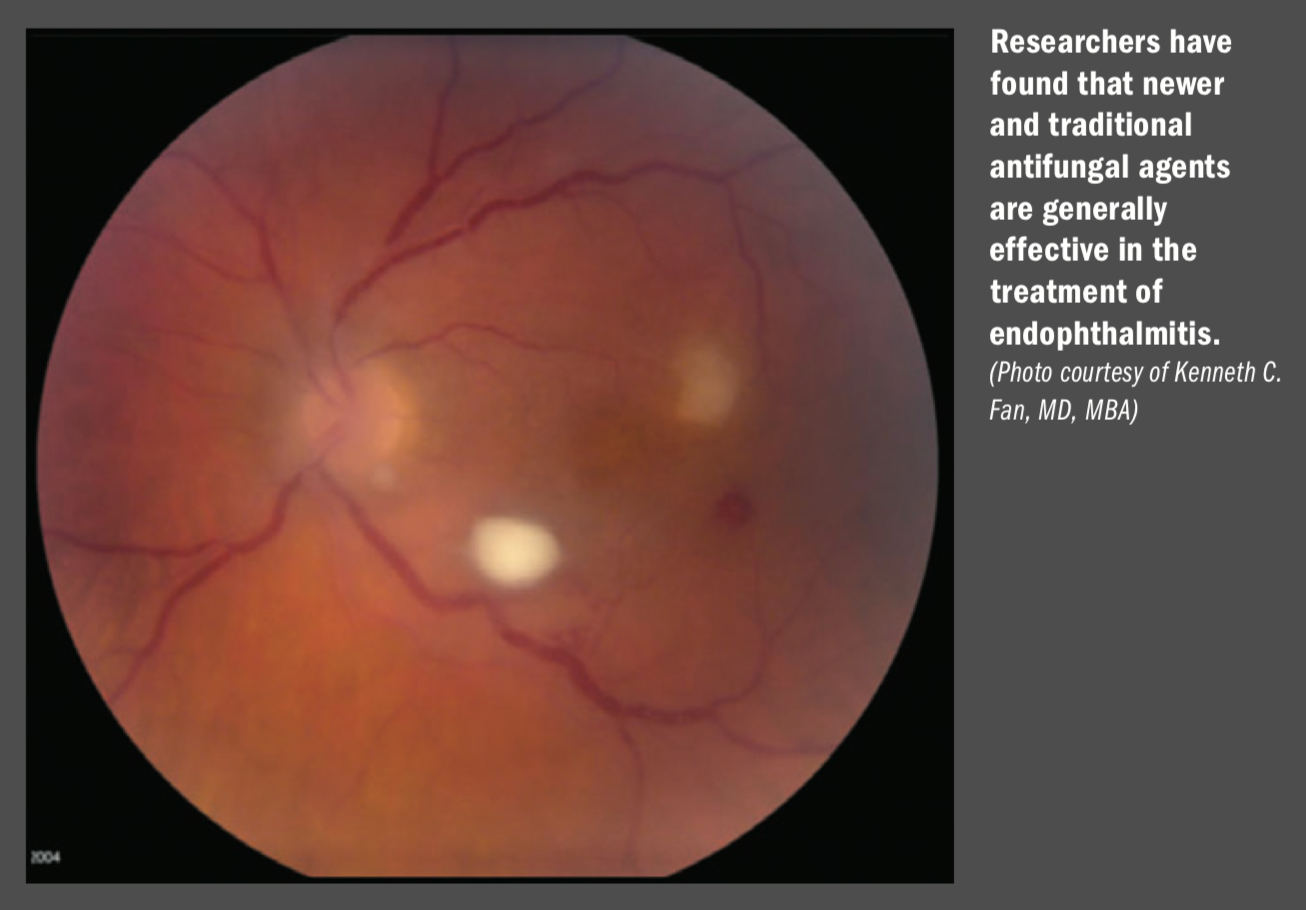Article
Study targets therapies for endophthalmitis
Study evaluates novel and traditional antifungal agents to determine efficacy.

By Kenneth C. Fan, MD, MBA
Ophthalmology Times is pleased to recognize Kenneth C. Fan, MD, MBA, resident, Bascom Palmer Eye Institute, University of Miami Miller School of Medicine, Miami, FL, as the fourth-place honoree of the second Ophthalmology Times Research Scholar Honoree Program. Dr. Fan’s abstract is featured here. The Ophthalmology Times Research Scholar Honoree Program is dedicated to the education of retina fellows and residents by providing a unique opportunity for fellows/residents to share notable research and challenging cases with their peers and mentors. The program is supported by unrestricted grants from Regeneron Pharmaceuticals and Carl Zeiss Meditec Inc.
PURPOSE
Fungal endophthalmitis can be associated with long treatment courses and poor outcomes. Newer antifungal agents are currently available but limited data is published on their effectiveness Some newer, more expensive therapies have not been compared to more traditional drugs.
METHODS
In our study, we conducted a retrospective review of app patients with positive vitreous cultures of candida species from Jan. 1, 2011, to Sept. 30, 2017. Frozen samples were inoculated with 10,000 CFU/mL of yeast broth at a temperature of 350 C for 48 hours. Antifungal sensitivities to Candida were obtained for the following:
- Echinocandins (Caspofungin, Anidulafungin, Micafungin)
- Triazoles (Voriconazole, Posaconazole, Itraconazole, Fluconazole)
- Polyenes (Amphotericin B)
- Nucleoside Analogs (5-Flucytosine)
RESULTS
Using ETEST strips and microdilution plats, a total of 17 Candida isolates were identified:
- C. albicans (10)
- C. glabrata (3)
- C. parapsilosis (2)
- C. tropicalis (2)
We also reviewed drug efficacy. We found that Amphotericin B is efficacious but can be toxic to retinal ganglion cells at even levels as low as 5μg (Tremblay et al.).
Voriconazole MIC90 was lower than other triazoles, and Anidulafungin MIC90 higher than other echinocandins. Voriconazole also has shown lower ocular toxicity, better penetration, and good clinical outcomes.
There is a growing body of case reports demonstrating clinical efficacy. In a comparison with other drug classes, there were two successful case reports of intravitreal caspofungin, and safety studies demonstrated no evidence of toxicity on ERG vs. NaCl.
In one rabbit model case series of 24 eyes vs. Voriconazole and Amphotericin B, it was clinically more effective (p < 0.05), and the retinal toxicity was lower than other groups (p < 0.05).
CONCLUSIONS
We found that both newer and traditional antifungal agents are generally effective. Mild candida resistance was seen with fluconazole (older) and anidulafungin (newer). Newer therapies are not necessarily more efficacious than traditional drugs. In-classagents, Voriconazole showed<MIC than fluconazole, itraconazole, posaconazole. Micafungin showed <MIC than caspofungin, anidulafungin.
We have found that further studies investigating these newer antifungals are necessary.
Newsletter
Don’t miss out—get Ophthalmology Times updates on the latest clinical advancements and expert interviews, straight to your inbox.




